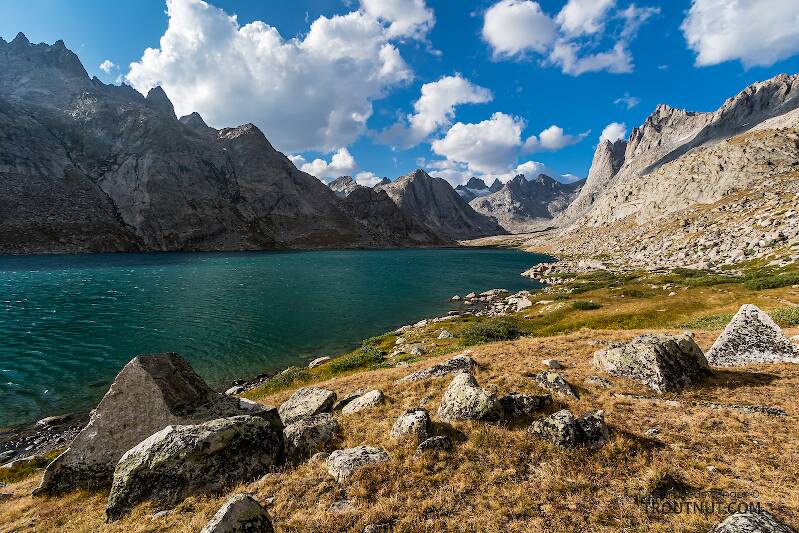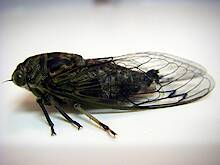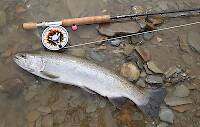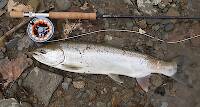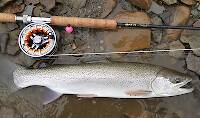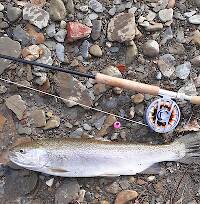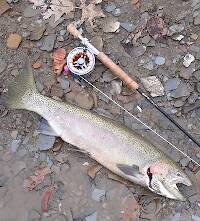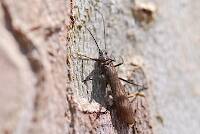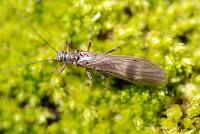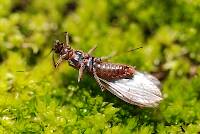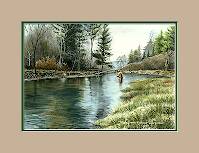
Blue-winged Olives
Baetis
Tiny Baetis mayflies are perhaps the most commonly encountered and imitated by anglers on all American trout streams due to their great abundance, widespread distribution, and trout-friendly emergence habits.
Featured on the forum

Some characteristics from the microscope images for the tentative species id: The postero-lateral projections are found only on segment 9, not segment 8. Based on the key in Jacobus et al. (2014), it appears to key to Neoleptophlebia adoptiva or Neoleptophlebia heteronea, same as this specimen with pretty different abdominal markings. However, distinguishing between those calls for comparing the lengths of the second and third segment of the labial palp, and this one (like the other one) only seems to have two segments. So I'm stuck on them both. It's likely that the fact that they're immature nymphs stymies identification in some important way.

Troutnut is a project started in 2003 by salmonid ecologist Jason "Troutnut" Neuswanger to help anglers and
fly tyers unabashedly embrace the entomological side of the sport. Learn more about Troutnut or
support the project for an enhanced experience here.
DayTripper has attached these 5 pictures to aid in identification. The message is below.
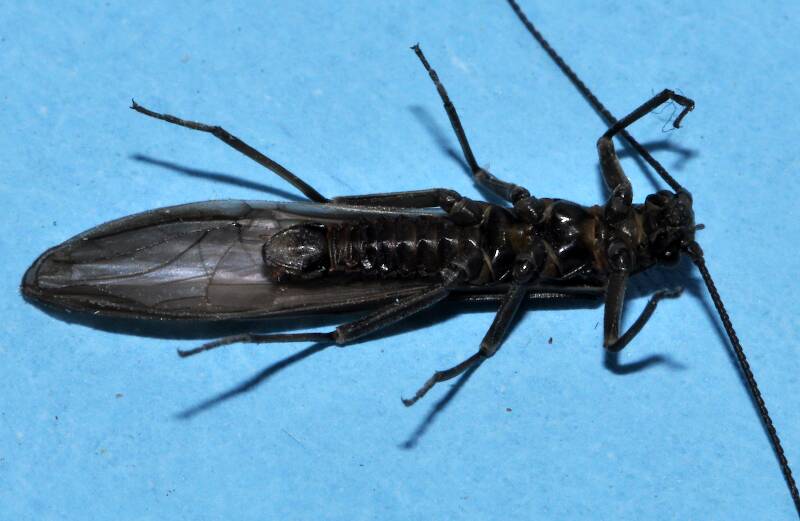
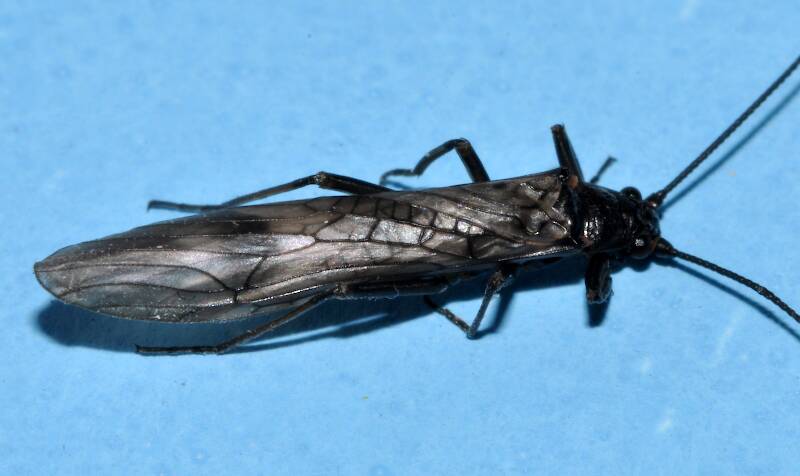
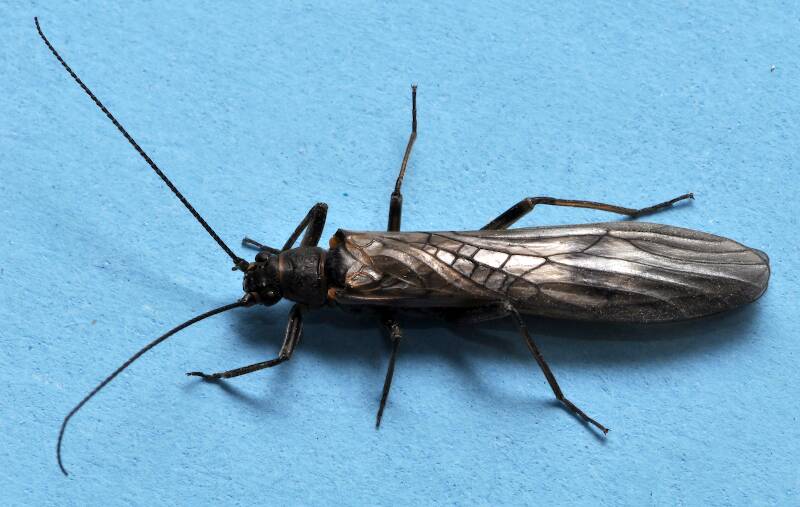
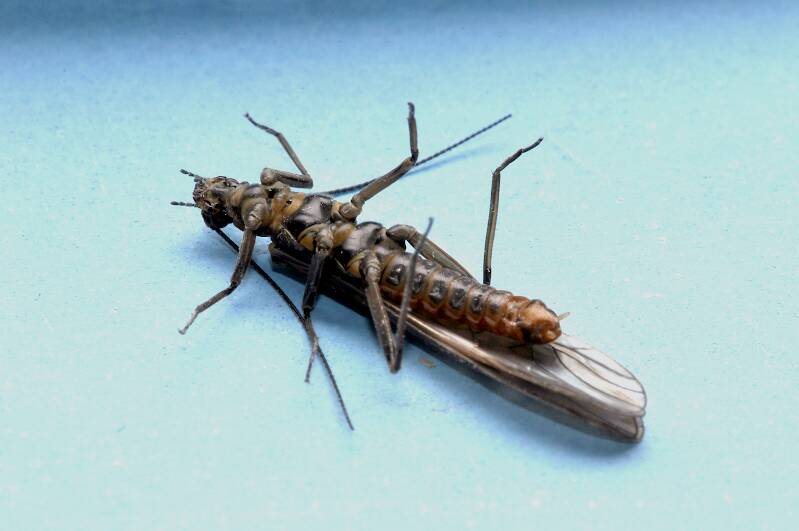
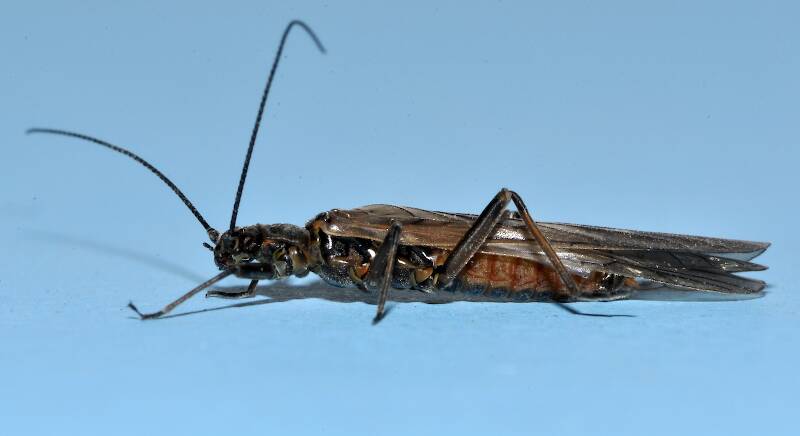
DayTripper on Mar 30, 2013March 30th, 2013, 5:49 pm EDT
Ran into a couple adult stones on a local river today and was hoping someone might be able to help me figure out what genus and/or species they are. I have a key for my area's mayflies, but nothing on stones or caddis yet-- would love to hear any book recommendations with these in them.
Both were found on a small northern Michigan tailwater (just north of 45-degrees lattitude). I still have both of these and can take additional photos if a closer look at anything is needed for a positive ID. I also have a microscope and can report anything at the micro level, if needed.
The early black stone is exactly 10mm long from the front of the head to the rear tip of the wing. The early brown stone is 14mm for the same distance.
Thanks for any help!
Both were found on a small northern Michigan tailwater (just north of 45-degrees lattitude). I still have both of these and can take additional photos if a closer look at anything is needed for a positive ID. I also have a microscope and can report anything at the micro level, if needed.
The early black stone is exactly 10mm long from the front of the head to the rear tip of the wing. The early brown stone is 14mm for the same distance.
Thanks for any help!
Entoman on Mar 30, 2013March 30th, 2013, 10:49 pm EDT
Hi Alex,
Both are in the family Taeniopterygidae and are commonly known as Early Black or Brown Winter Stoneflies or Willowflies. The brown one looks like Strophopteryx fasciata (Mottled Willowfly) and I'm thinking the smaller dark one is a male of the same species.
Both are in the family Taeniopterygidae and are commonly known as Early Black or Brown Winter Stoneflies or Willowflies. The brown one looks like Strophopteryx fasciata (Mottled Willowfly) and I'm thinking the smaller dark one is a male of the same species.
"It's not that I find fishing so important, it's just that I find all other endeavors of Man equally unimportant... And not nearly as much fun!" Robert Traver, Anatomy of a Fisherman
DayTripper on Mar 31, 2013March 31st, 2013, 5:47 am EDT
Thanks! I really appreciate the help. I didn't realize that you get that much color variation between sexes of the same species with stones, but now that I think about it, its kind of silly that there wouldn't be.
Are the horn-looking things folded up onto the tip of the abdomen on the male what it uses to grab onto the female?
Are the horn-looking things folded up onto the tip of the abdomen on the male what it uses to grab onto the female?
Entoman on Mar 31, 2013March 31st, 2013, 2:31 pm EDT
Are the horn-looking things folded up onto the tip of the abdomen on the male what it uses to grab onto the female?
My pleasure, Alex. As to your question, the answer is yes and no. I believe your premise is correct that Stoneflies do grab on after a fashion, but they copulate terrestrially as opposed to aerially (as mayflies do) so their genitalia are structured to meet different requirements. What appears to be claspers in the photo are actually lateral parts of the underlying segment up against the process. If you take a lateral photo (with the wings and leg out of the way) it should show the process jutting distinct from the sterna posteriorly and turning up slightly at its apex.
"It's not that I find fishing so important, it's just that I find all other endeavors of Man equally unimportant... And not nearly as much fun!" Robert Traver, Anatomy of a Fisherman
DayTripper on Mar 31, 2013March 31st, 2013, 3:51 pm EDT
Thanks for the info! You learn something new everyday. How did you determine these are fasciata? Not that I question it, I'm just curious what you're supposed to look for with these guys. With Mayflies, I "see" the differences between species, but with stoneflies-- and many caddisflies-- they all look the same to me, other than color and size.
Entoman on Mar 31, 2013March 31st, 2013, 4:03 pm EDT
Well, the family is easily determined in your crisp photos as they clearly show the unique tarsal segment ratios. Going beyond the overall look of the critter that points to the Mottled Stone group of species are diagnostic characters a bit more esoteric. The wing venation/spotting pattern, and more importantly the shape of the 9th sternal processes look to be right.
"It's not that I find fishing so important, it's just that I find all other endeavors of Man equally unimportant... And not nearly as much fun!" Robert Traver, Anatomy of a Fisherman
Quick Reply
Related Discussions
Topic
Replies
Last Reply
Re: Differentiation b/t Gomphidae and Cordulegastridae
In the Insect Order Odonata-Anisoptera by DMM
In the Insect Order Odonata-Anisoptera by DMM
1
Nov 29, 2006
by Troutnut
by Troutnut

